Students: please complete a short survey after each Oceania Semester event you attend. Each time you complete a survey, you will be entered into a drawing for a $1,000 Student Study Abroad Grant. The more events you attend, the more chances you will have to win the $1,000 grant. After getting the four-digit code for the event you attended, use the link below or scan the QR code to access the survey.
attend. Each time you complete a survey, you will be entered into a drawing for a $1,000 Student Study Abroad Grant. The more events you attend, the more chances you will have to win the $1,000 grant. After getting the four-digit code for the event you attended, use the link below or scan the QR code to access the survey.
https://tinyurl.com/MSSUOceaniaSemester
8 a.m. to 5 p.m. Monday – Friday 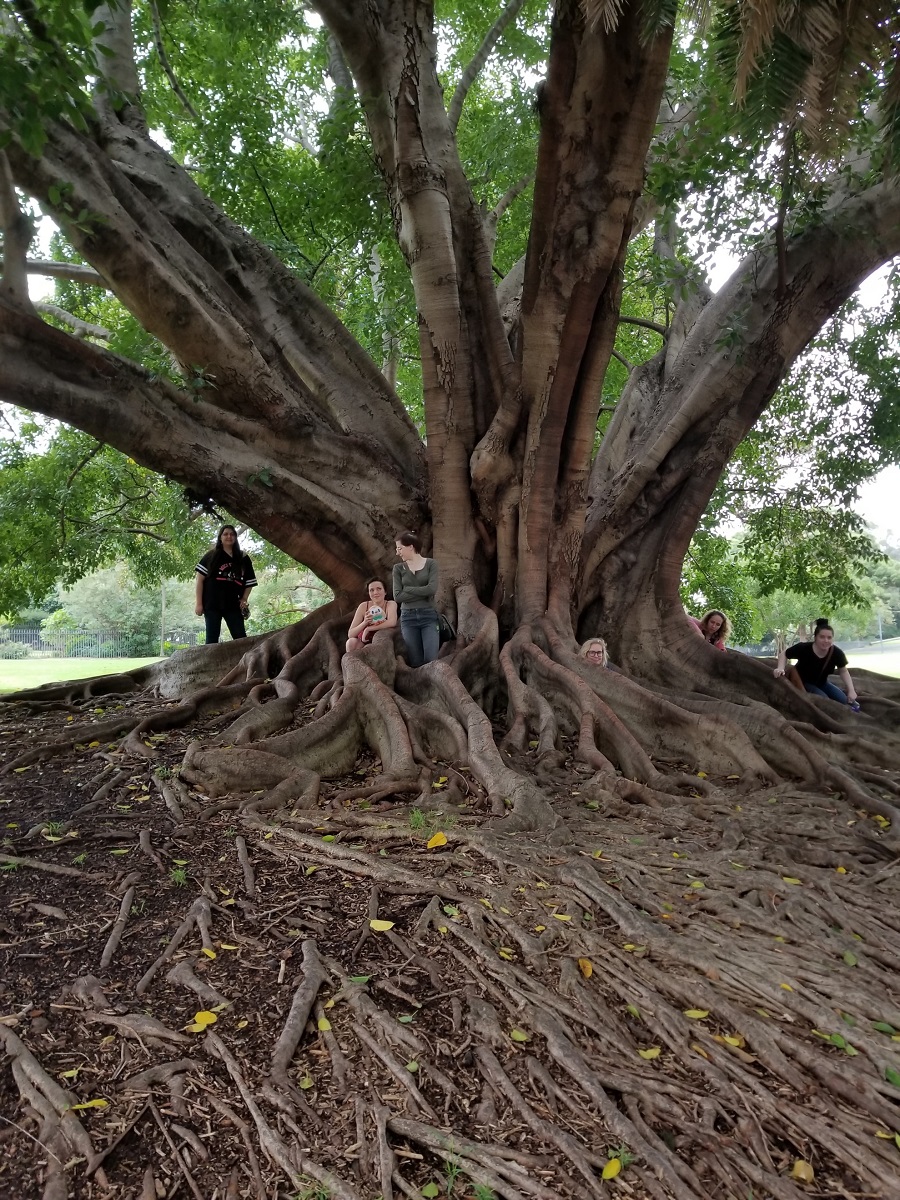 Aug. 12 through Aug. 28, 2019
Aug. 12 through Aug. 28, 2019
(Reception from 4 to 6 p.m., Monday, Aug. 19, 2019)
MSSU Spiva Art Gallery
Admission: free
In March 2019, the MSSU International Art Seminar class traveled to Sydney and Melbourne, Australia to study contemporary Australian Aboriginal art. This exhibit features artwork created in response to their discoveries. Contemporary Aboriginal Australians are advancing the oldest continuous artistic tradition in the world. Much of Australian Aboriginal artwork (historic and contemporary) is about organizing and sharing collective memories, marking and reflecting on important sites, and bearing witness to the struggles during and following British colonization. The artists (Pheobe Burke, Rachael Gopalakrishnan, Tracey Graves, Lydia Humphreys, Kyle McKenzie, Jamie Robinson, and Grace Sitton) have reflected on these traditions in various ways and in various media. The exhibition is centered around an approach, inspired by much of the Indigenous artwork in collections in Sydney and Melbourne, of using art for organizing memories and reflecting on places.
11 a.m. Wednesday, Aug. 28, 2019 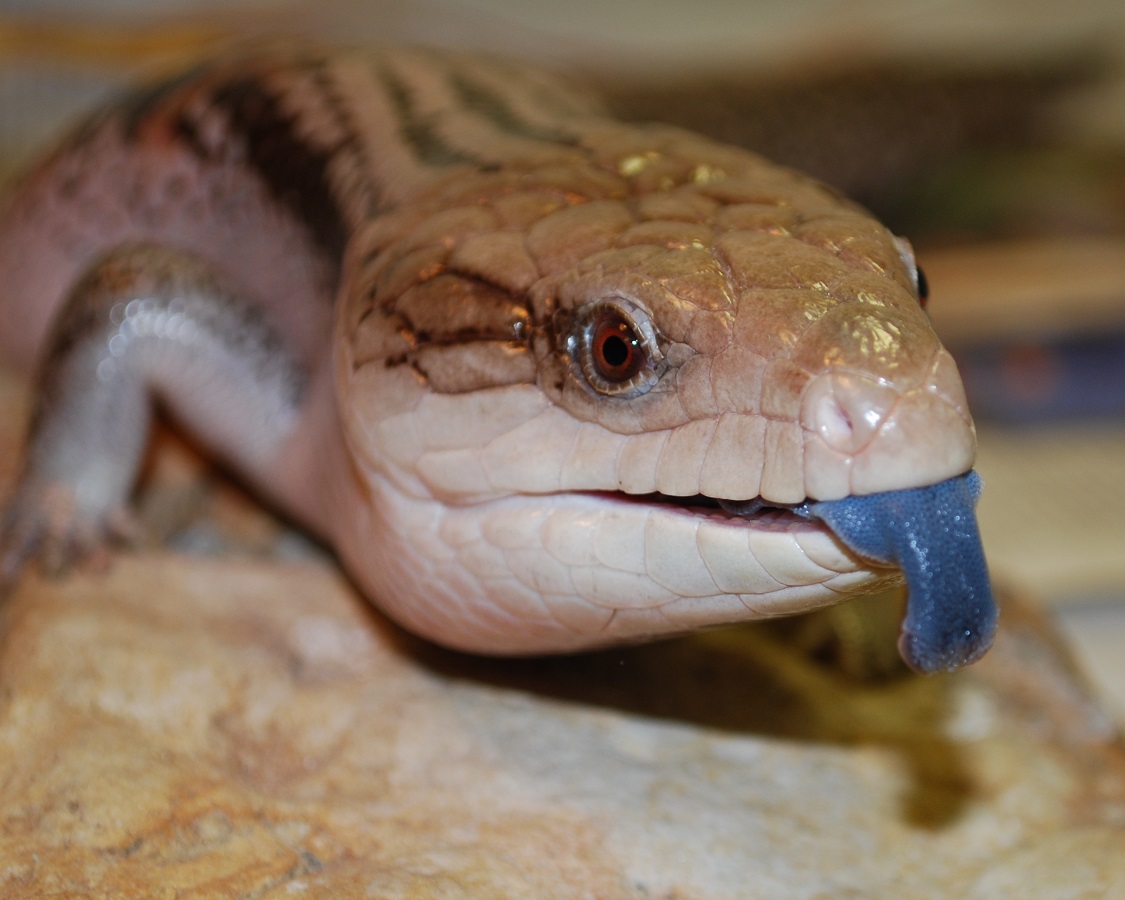 Corley Auditorium in Webster Hall
Corley Auditorium in Webster Hall
Admission: free
Come with us to the land down under as we meet animal ambassadors from Dickerson Park Zoo in Springfield that are indigenous to Australia. Australia has more marsupials than any other continent. Which marsupial will you meet? There will also be a feathered friend from Australia and two animals with scales. They can’t wait for the presenter to share where they live in Australia, what they eat and special adaptations that help them survive.
Dickerson Park Zoo connects people with animals to inspire conservation and protection of all wildlife. The zoo features hundreds of animals representing South America, Asia, Africa, Australia, and Missouri habitats. The Ambler Diversity of Life exhibits provide an up-close look at reptiles, amphibians, and insects. The “Tropical Asia” region showcases Asian elephants, tigers and primates. In “Africa,” guests can stand eye-to-eye with giraffes on the feeding/viewing deck. The “Missouri Habitats” is home to gray wolves, mountain lions, river otters, bobcats, black bears and other native animals.
8 a.m. to 5 p.m. Monday – Friday 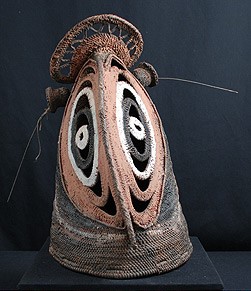 Sept. 3-27, 2019
Sept. 3-27, 2019
(Reception from 3 to 5 p.m. Friday, Sept. 6, 2019)
MSSU Spiva Art Gallery
Admission: free
Melanesia is the most culturally diverse and believed to be earliest settled of the three Pacific island regions. In general, Melanesians were not seafarers and had a reputation for hostility that helped delay western contact. The objects on display are from New Guinea, the second largest island in the world, which features diverse geographies ranging from tall mountainous regions to extensive lowlands to rich coastal areas. The island is so rugged that many villages are isolated from each other to the point that more than 800 languages are spoken across this island of about 11 million people. This isolation also helped buffer the eventual impact of European colonialism, allowing the majority of the arts to survive largely intact without becoming “westernized.”
On view in this exhibition will be a selection of engaging ritual and everyday objects including Bilum (string) bags, ceremonial bowls, figures, and rattan masks. Object loan courtesy of the Spurlock Museum, University of Illinois at Urbana-Champaign.
10 a.m. Wednesday, Sept. 4, 2019 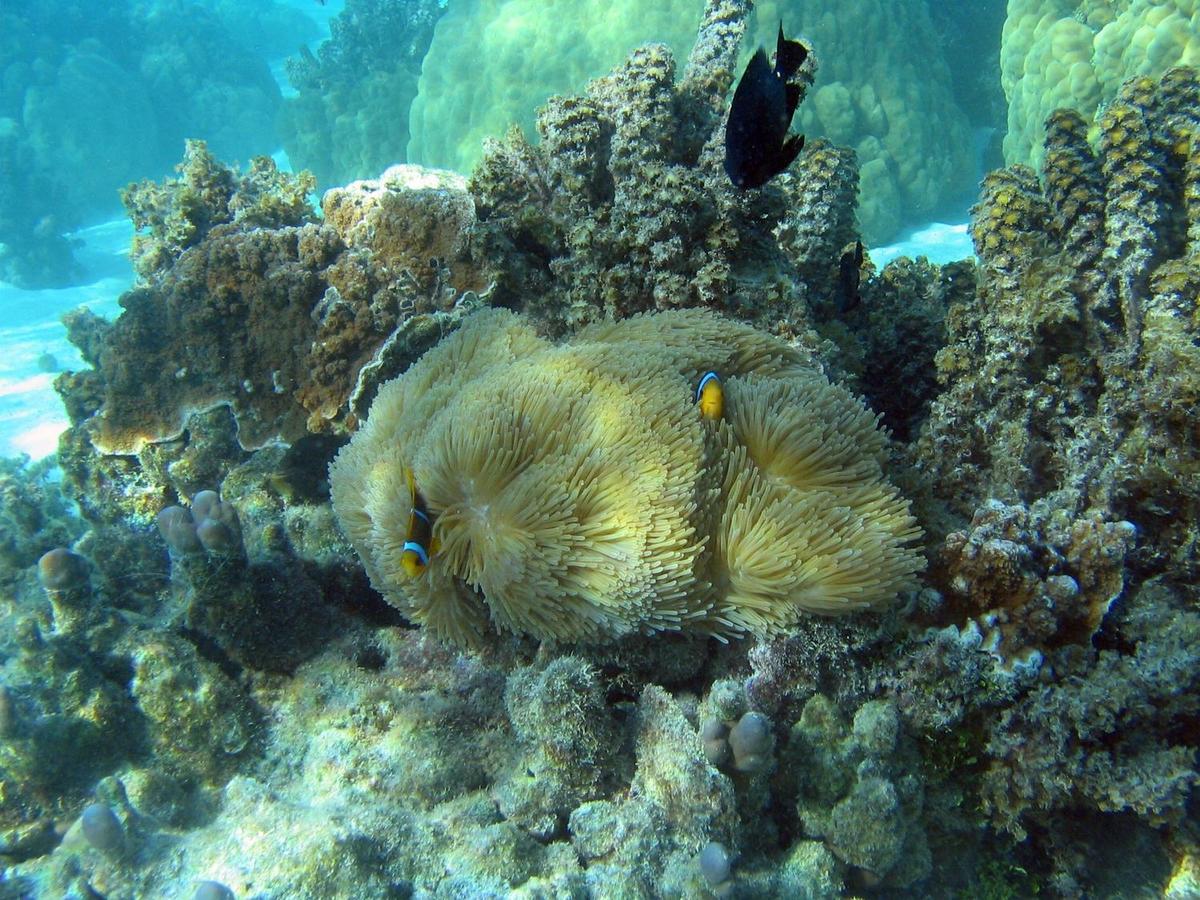 Corley Auditorium in Webster Hall
Corley Auditorium in Webster Hall
The Great Barrier Reef, located off the coast of Queensland, Australia, is the world’s largest coral reef system. It is made up of over 2,900 individual reefs and 900 islands spanning some 2,600 kilometers. To give an idea of its immense size, it makes up an area greater than the United Kingdom, Switzerland, and Holland combined. The Great Barrier Reef is home to an incredible diversity of animals. For example, more than 400 coral species and 1,500 fish species call the reef home and more than 10 percent of the world’s fish species live within the Great Barrier Reef.
The Great Barrier Reef is a popular tourist destination that helps generate approximately AU $5-$6 billion a year. Due to its popularity, the Australian government has implemented strict regulations to protect the reef system from overexploitation by people. Even with these regulations in place, the entire reef system is under threat from climate change and ocean acidification. In 1998 and 2002 the Great Barrier Reef experienced two major coral bleaching events that affected approximately 50 percent of the reef system. Dr. Jason Willand will explore the biodiversity of the Great Barrier Reef and the measures that are being taken to restore parts of the reef that have experienced coral die-off due to bleaching events.
Dr. Jason Willand is an assistant professor of biology and environmental health at  MSSU. He received his B.S. and M.S. in biology from Western Illinois University and his Ph.D. in plant biology from Southern Illinois University. While he has always been fascinated by the natural world, he became interested in field ecology while working on an undergraduate research project studying ground beetle habitat preferences and daily activity patterns in coalmine remnants. His passion for insects was later joined by plants after taking a plant systematics class while working on his master’s degree.
MSSU. He received his B.S. and M.S. in biology from Western Illinois University and his Ph.D. in plant biology from Southern Illinois University. While he has always been fascinated by the natural world, he became interested in field ecology while working on an undergraduate research project studying ground beetle habitat preferences and daily activity patterns in coalmine remnants. His passion for insects was later joined by plants after taking a plant systematics class while working on his master’s degree.
During the past five years at MSSU, Willand has taught a diversity of biology courses such as general biology, principles of biology, economic botany, plant taxonomy, and entomology. The inspiration for his presentation on the Great Barrier Reef came from a biomes course he co-taught with Dr. Scott Wells during the spring 2019 semester focusing on the rainforests and coral reefs of Belize.
10:30 a.m. – 1:30 p.m. Wednesday, Sept. 4, 2019 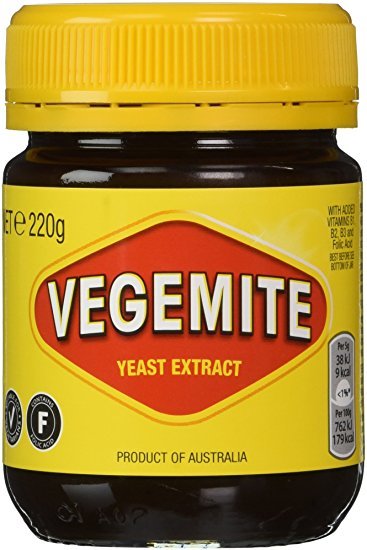 Billingsly Student Center
Billingsly Student Center
Admission: free (while supplies last)
Join the Campus Activities Board in trying Vegemite, a unique snack spread loved by Australians. Along with the tasting station, CAB will have a photo booth with iconic Oceania locations.
11 a.m. Wednesday, Sept. 4, 2019 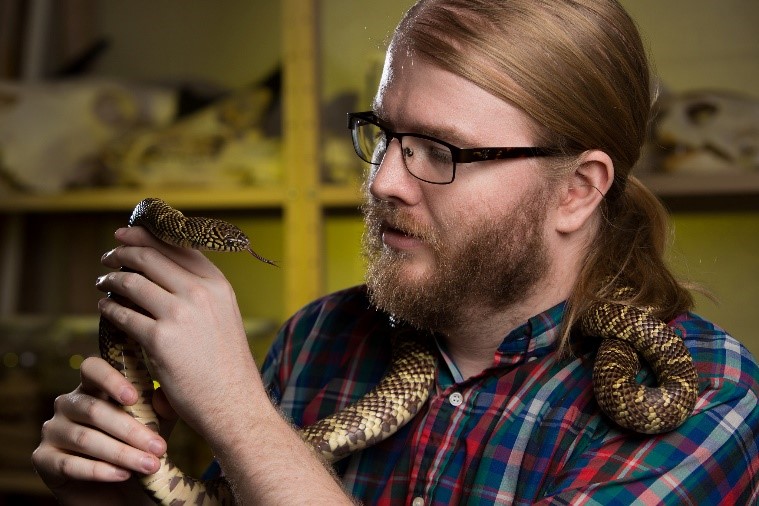
Corley Auditorium in Webster Hall
Southeast Asia is home to a wide array of richly diverse ecosystems. The islands of the region are evolutionarily intriguing in origin. Islands of very close proximity have distinct origins from either the Indo-Australian plate or the Eurasian plate. They contain one of the highest diversities of amphibians, reptiles, and mammals on our planet. Unfortunately, many of the ecosystems that support this rich biodiversity are threatened by a wide array of problems.
A growing concern in many different ecosystems is invasive species. Humans are exceptionally good at generating bad ideas and causing natural disasters. The transplantation of the cane toad is one such example. This large toad is native to South America but is currently rampaging through Australia and neighboring islands after being introduced by humans for pest control. Unlike the cane toad, the brown tree snake is native to Southeast Asia. However, it was unintentionally transplanted to Guam where it has decimated the native wildlife. Dr. David Penning will discuss the historical context of these and other species introductions and what biologists are currently doing to prevent any further damage.
Dr. David Penning is an assistant professor of biology and environmental health at MSSU. He earned his Ph.D. in environmental and evolutionary biology from the University of Louisiana at Lafayette and his B.S. and M.S. from the University of Central Missouri. Penning is the principal investigator of the Reptile Physiology Lab at MSSU, where students work on undergraduate research projects with more than 30 snakes from around the globe. The lab uses high-speed cameras and pressure/force sensors to better understand how snakes function as both predators and prey.
Penning has published over a dozen peer-reviewed papers and has been involved in over 80 presentations at professional conferences. His work has been featured on PBS, where he reconstructed the constriction performance of the largest snake known ever to have lived, Titanoboa. Major media outlets including the New York Times, Los Angeles Times, Yahoo News, Huffington Post, and National Geographic have also covered his work. Most recently, he was featured on the Discovery Channel and the Smithsonian Network.
9:30 a.m. Thursday, Sept. 5, 2019 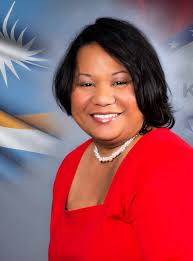
Corley Auditorium in Webster Hall
Admission: free
Springdale, Arkansas, has the second highest population of Marshallese people in the world, behind only the Marshall Islands. There are an estimated 12,000 Marshallese in Arkansas, most coming for better jobs, education, and access to health care. They face several challenges, including the language barrier, transportation, access to Medicaid (adults), diabetes and other chronic diseases, a lack of resources, and others not understanding their culture.
Melisa Laelan is the founder and chief executive director of the Arkansas Coalition of Marshallese (ACOM), a not-for-profit organization that focuses on health, leadership, education and culture. Laelan is a native of the Marshall Islands, born and raised in the capital city of Majuro. She became the first certified Marshallese interpreter in the nation in 2013, after moving to Arkansas. Subsequently, she was appointed by former Gov. Mike Beebe to serve on the Arkansas Minority Health Commission. Her policy work has led to Marshallese children having access to the state Medicaid program and providing Marshallese mothers and children protection against human trafficking and adoption schemes.
2 p.m. Friday, Sept. 6, 2019 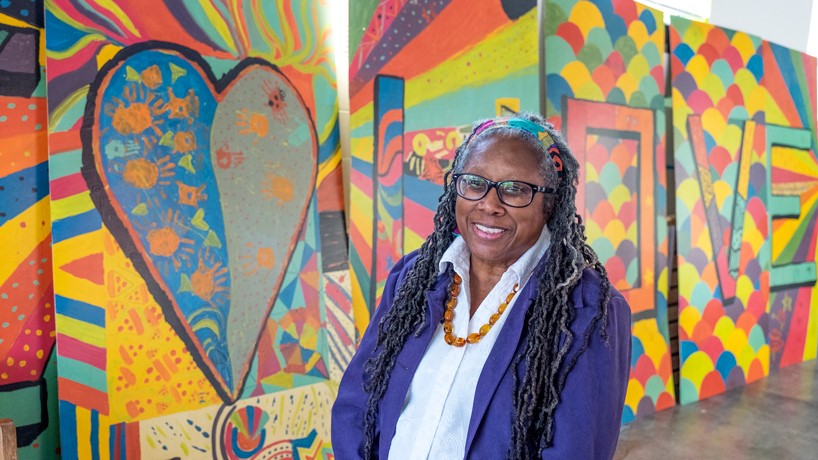
Corley Auditorium in Webster Hall
Admission: free
The diversity of cultural groups and relative isolation of many areas in Papa New Guinea led to a large range of functions, styles, materials and motifs in their art forms. These works can be challenging to western notions of aesthetics and art. This presentation will serve as an overview of the Art of Papua New Guinea and by using images compiled from her own extensive travels through Papua New Guinea and work as a curator, Dr. Jacquelyn Lewis-Harris will to help give context for the works on display in the Oceanic Journey: The Art of Papua New Guinea exhibition in the Spiva Gallery.
Dr. Jacquelyn Lewis-Harris is the former director of the Connecting Human Origin and Cultural Diversity program and associate professor in both anthropology and the College of Education at the University of Missouri-St. Louis. She holds a doctorate and master’s in anthropology from Washington University in St. Louis. In her former position as assistant curator at the Saint Louis Art Museum, she curated several exhibits including Art of Papua New Guinea, Africa Explores: 20th Century African Art, Jacob Lawrence: The Migration Series, Visions of the People, Faith Ringgold, Masterpieces of Central Africa, and the reinstallation of the museum’s African and Pacific galleries. She currently consults for collectors, galleries and museums as an independent curator. Lewis-Harris has published numerous articles, chapters and catalogs on African American, Papua New Guinean and West African artists, as well as Pacific art and cultures in relation to identity, art and contemporary society.
11 a.m. Monday, Sept. 16, 2019 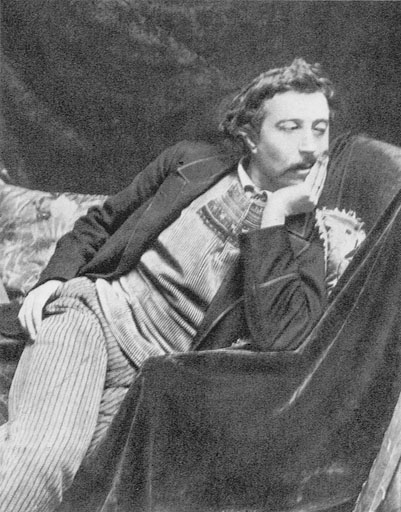
Corley Auditorium in Webster Hall
Admission: free
When Paul Gauguin (1848–1903) first arrived in Tahiti in 1891, he was dismayed to discover how much the indigenous ways of life and religions had been suppressed by colonial rule and missionaries. Born in Paris, raised in Peru, and a world traveler before the age of 25, Gauguin’s lifelong fascination with other cultures – their imagery, their traditions, and their beliefs – shaped his career as an artist. This talk will trace the theme of myth and religion in his art with an emphasis on the inspiration he found in Polynesia, and it will reveal how the greatest myth Gauguin created may have been his own artistic legend.
Allison Perelman is a third-year Ph.D. student in the Department of Art History and 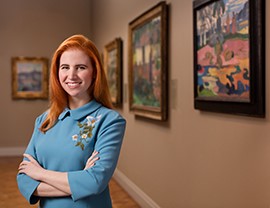 Archaeology at Washington University in St. Louis. She focuses on late 19th century European art with a particular interest in the space of the artist’s studio in the fin-de-siècle. She received her B.A. in art history from Brown University and her M.A. from the University of Chicago. Prior to attending Washington University, Perelman was a research associate at the Art Institute of Chicago. She was the dedicated researcher for all Impressionist and Post-Impressionist exhibitions, including Degas: At the Track, On the Stage; The Painted Tapestries of Édouard Vuillard; Van Gogh’s Bedrooms; and Gauguin: Artist as Alchemist, for which she was also a contributing author to the catalogue.
Archaeology at Washington University in St. Louis. She focuses on late 19th century European art with a particular interest in the space of the artist’s studio in the fin-de-siècle. She received her B.A. in art history from Brown University and her M.A. from the University of Chicago. Prior to attending Washington University, Perelman was a research associate at the Art Institute of Chicago. She was the dedicated researcher for all Impressionist and Post-Impressionist exhibitions, including Degas: At the Track, On the Stage; The Painted Tapestries of Édouard Vuillard; Van Gogh’s Bedrooms; and Gauguin: Artist as Alchemist, for which she was also a contributing author to the catalogue.
11 a.m. Thursday, Sept. 19, 2019 
Corley Auditorium in Webster Hall
Admission: free
A guide to the customs, culture, and food from the land down under. Jay Jay Wolf will explore why Australians talk and say the things they do, where they come from, and what they represent. He will also delve into the iconic foods that are eaten and the crazy national sports the Aussies play.
12 p.m. Friday, Sept. 20, 2019 
Corley Auditorium in Webster Hall
Admission: free
Australia has a heritage of street food and home food that defines the typical person. Many dishes that Australians have made their own have origins inherited from Chinese and Greek immigrants, or came directly from the British or convicts transported from Great Britain to penal colonies in Australia. Jay Jay Wolf, who brought Australian meat pies, sausage rolls, and sausages to the United States in 2017, will share the taste of his country and allow you to sample one of his mini party pies.
Jay Jay Wolf is known for bringing the taste of Australia to the United States through his Aussies Pies and Sausages website, https://aussiepiesandsausages.com/. He grew up in Melbourne, where pies were always within easy reach. After a 20-year career manufacturing women’s and children’s clothing for major retailers in the U.S., Wolf began baking and soon discovered that his passion was in the kitchen rather than in retail. Living in Los Angeles, he missed Aussie food, football, and the friendliness and humor of his mates. In 2017, he decided it was time to bring the Australian missing pieces to the American world and bring the taste Australians miss directly into their homes. He started making meat pies and sausage rolls and shipping them anywhere in the U.S.
10 a.m. Monday, Sept. 23, 2019 
Corley Auditorium in Webster Hall
Admission: free
Dramaturgy is a comprehensive exploration of the context in which a play resides. The effective production of a play requires an understanding of the incidents and issues that sparked its creation. Where did the play come from? What does it tell us about the time when it was written? How does it speak to us today?
Southern Theatre’s offering for the Oceania Semester, Andrew Upton’s Hanging Man, invites us to learn more about its Australian context. The experience of the play, both for the company producing it and the audiences viewing it, is enhanced and enriched when some of the rest of the iceberg can be seen.
Dr. Jim Lile, director of Hanging Man, will share what he learned about the 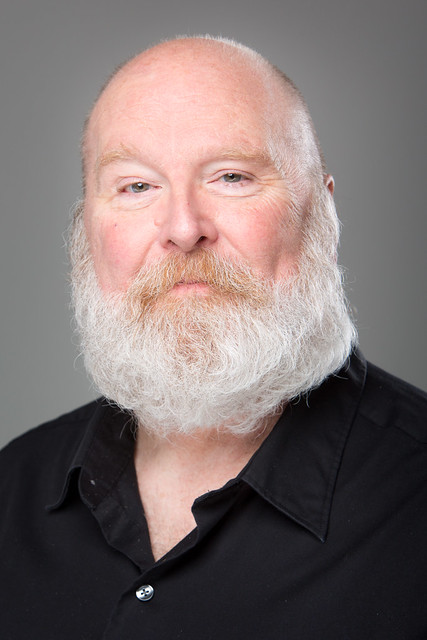 playwright and the work, and add some insight into the world beyond the play that, inevitably, informs and affects the lives and actions of the characters.
playwright and the work, and add some insight into the world beyond the play that, inevitably, informs and affects the lives and actions of the characters.
Dr. Jim Lile joined the Theatre Department faculty in 2004 and served as department chair for eight years. He earned his B.A. and M.A. in theatre at East Texas State University (now Texas A&M University-Commerce) and his Ph.D. in theatre history and criticism at Kent State University.
Equally at home in rehearsal or in the classroom, Dr. Lile brings a wealth of teaching, acting, directing, and design experience gathered over three decades from schools and theatres in Texas, Ohio, Virginia, and West Virginia.
5:30 p.m. Wednesday, Sept. 25, 2019 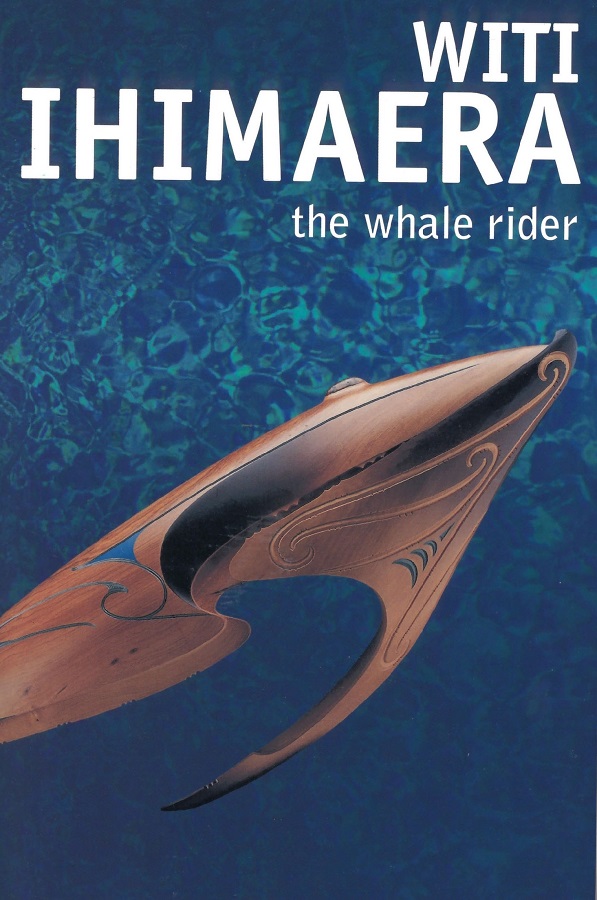
Joplin Avenue Coffee Company
506 S. Joplin Ave.
Admission: free
The Whale Rider (1978) by Witi Ihimaera, the first Māori writer to publish both a novel and a book of short stories, is beloved the world over by adults and younger readers alike. The New Zealand Book Council profile of Ihimaera describes The Whale Rider as “A magical, mythical work about a young girl whose relationship with a whale ensures the salvation of her village, [and] it is, says Ihimaera, the work of his ‘that the Māori community accepts best.’” Enjoy the book, learn about the Māori culture of New Zealand, and meet new people in the process by joining the Oceania-themed book club hosted by the Missouri Southern English honor society Sigma Tau Delta. Pick up a copy of The Whale Rider by Witi Ihimaera in Webster Hall 337 (while supplies last). The book club will meet on Wednesdays: Sept. 25 at Joplin Avenue Coffee (first third to half of book), Oct. 23 at the Joplin Public Library (second half of book), and Nov. 20 at Phelps Theater in the Billingsly Student Center on the MSSU campus (endings, adaptations, and afterlives). The book club is open to the public, and snacks will be provided.
1 p.m. Thursday, Sept. 26, 2019 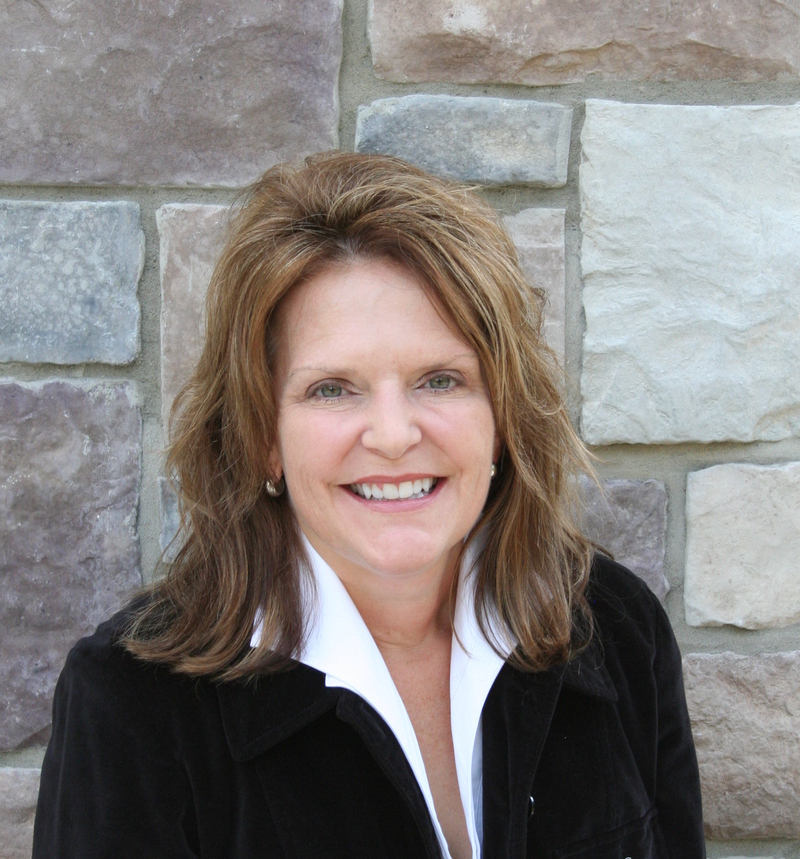
Cornell Auditorium in Plaster Hall
Admission: free
New Zealand is a country of just under 5 million people in the South Pacific with a rich and diverse history, beautiful landscapes, and friendly caring citizens. This presentation will give attendees a chance to learn about the history of the indigenous people to New Zealand, the Māori. Topics to be included are the arrival of explorers to the islands, particularly the British, and the signing of the Treaty of Waitangi. The Māori have strong traditions and customs, some of which will be shared as the presentation concludes with the Māori in New Zealand society today.
Karen Polon, a professor of physical education at Cottey College, took a sabbatical leave to New Zealand in 2006. She co-led Cottey students to the North Island in 2009 and 2010 and to the South Island in 2017. Polon was a co-leader of the first Cottey trip to Thailand in 2013 and led a group of students to Australia in March 2019.
9 a.m. Monday, Sept. 30, 2019 
Corley Auditorium in Webster Hall
Admission: free
From the embrace of convict ancestors to the celebration of Mel Gibson’s larrikin character in the 1981 hit film Gallipoli, Australians seemingly cherish a rugged and irreverent frontier mythos. But this has not always been the case. Australian society has long struggled to articulate a common identity that reconciles its origins as a white settler colony in the Pacific with its future as multicultural nation-state. This talk will trace the development of Australian cultural and national identity over the past 200 years, examining its complicated relationship with race and Britishness, the importance of the First World War and the legend of ANZAC, and a more recent emphasis on reincorporating aboriginal traditions. By focusing on Australia as an example of settler colonialism, the talk will draw parallels with the evolution of American identity.
10 a.m. Monday, Sept. 30, 2019 
Corley Auditorium in Webster Hall
Admission: free
In 1914, the Commonwealth of Australia became embroiled in the First World War alongside the rest of the vast British Empire. Australians employed the patriotic language of Britishness to, in the words of one leader, “stand beside the Mother Country to help and defend her to the last man and the last shilling.” From a population of less than five million, 400,000 Australians served with the ANZACs on the other side of the world. Over 60,000 never returned, remaining in military cemeteries with now-iconic names like Gallipoli, the Somme, and Amiens. The war marked the Dominion’s entry onto the world stage and helped to cement a distinct Australian nationality. It also sparked immensely divisive debates about race, gender, citizenship, and the authority of the state. This talk will explore the Australian experience from 1914-1918, examining how the Great War marked an important milestone in the development of the Australian nation.
John C. Mitcham is an associate professor and chair of the Department of History at Duquesne University. He earned his Ph.D. from the University of Alabama in 2012. Mitcham’s first book, Race and Imperial Defence in the British World, 1870-1914, was published in 2016 by Cambridge University Press and was a finalist for the Templer Medal. In Summer 2018, he held a visiting fellowship with the Australian Department of Defence in Canberra.
Mitcham's new book project is titled Remaking the World: The Great War and the Origins of the Commonwealth. In this broad transnational study, he examines how political leaders, colonial administrators, military officers, journalists, and business elites in Britain and the Dominions dealt with the First World War and the rise of anti-colonial nationalism in places like Ireland, India, South Africa, and Egypt.
Mitcham has lectured throughout North America, Europe, Australia, and Asia, and is an elected Fellow of the Royal Historical Society. He and his wife, Nichole, live in Pittsburgh with their seven-year-old, Eleanor.
7:30 p.m. Wednesday-Saturday, Oct. 2-5, 2019 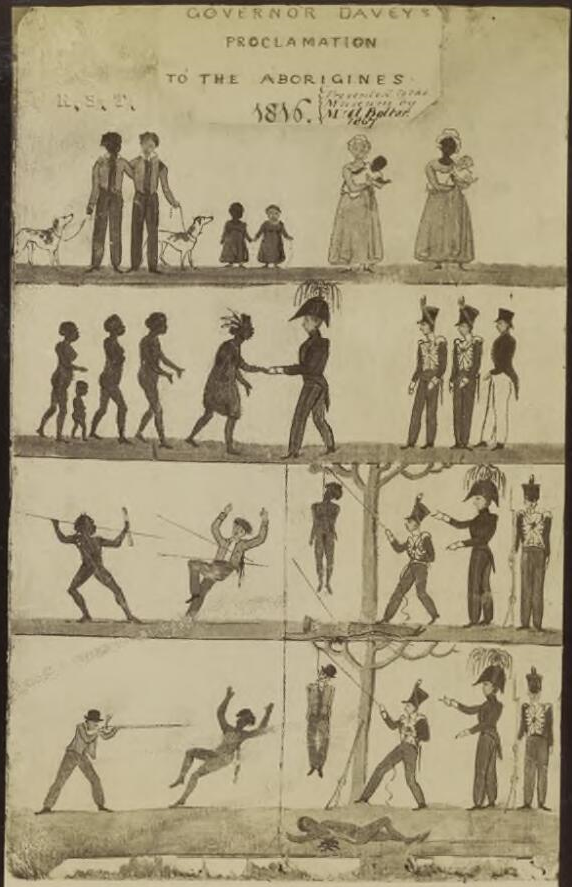 Bud Walton Theatre
Bud Walton Theatre
Admission: $7 for adults and $5 for students and senior citizens
Hanging Man opens the morning after the death of a family matriarch. Her death leaves the estate of her long dead husband, a (fictional) famous and contentious Australian artist, in the hands of his three sons. At the core of their father’s legacy is a series of paintings of which the eponymous Hanging Man is the centerpiece. Tom Healey, Australian Script Centre literary manager and Red Door curator, writes, “… Hidden from sight by the family, [the painting] now becomes publicly available. The fallout from this is intense and deeply nuanced. Who stands to make what? What political and/or cultural damage might it perpetrate? What right has the present to ‘whitewash’ the past?”
Andrew Upton has established himself as a writer for both stage and screen. His play Hanging Man was commissioned by the Sydney Theatre Company and premiered at the Wharf Theatre in 2002. In 2008, Upton and wife Cate Blanchett became joint artistic directors of the Sydney Theatre Company for what became a five-year term. In June 2014, Upton was recognized with the Rotary Professional Excellence Award, an award instituted “to honor a person who has demonstrated consistent professional excellence in his or her chosen vocation by contributing to the benefit of the wider community beyond their typical workplace role.”
10 a.m. Monday, Oct. 7, 2019 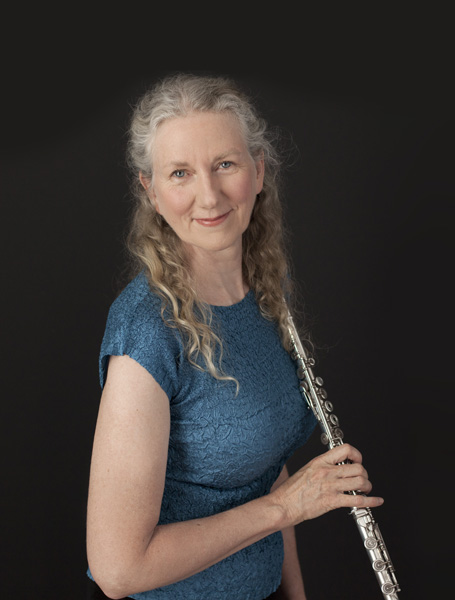 Corley Auditorium in Webster Hall
Corley Auditorium in Webster Hall
Admission: free
Alexa Still (described as a national treasure by New Zealand’s press) will charm you with her “mid-Pacific” accent relating her home country’s existentialist outlook – at the same time both 20 years behind and more progressive than many. One of the last countries to be inhabited by humans due to remoteness, New Zealand was the first country to allow women to vote and the 15th country to allow same sex marriage. It recently ranked 11th in environmental performance, and it enjoys one of the lowest perceived levels of corruption and very high levels of quality of life, health, education, protection of civil liberties and economic freedom.
New Zealand is also a country where the Queen’s image decorates the currency, the number of bagpipe bands exceeds Scotland’s, and Kiwis enjoy elevenses usually involving cups of tea. Renowned for friendliness toward all and a self-effacing humor (for example, the Flying Concords), New Zealanders have also taken great pride in race-relations and a very low rate of gun-related violence…until the recent mass-shooting at mosques in Christchurch. A nation’s heartbreak is shown in devastation of the New Zealand psyche and desperation for a way to bring safety back to the shires.
A New Zealander, Alexa Still took up graduate studies in New York (SUNY Stony Brook), where she also won competitions including the New York Flute Club Young Artist Competition and the East and West Artists Competition. Still returned home to be principal flute of the New Zealand Symphony Orchestra. Increasing solo engagements eventually led her to the more flexible schedule of a teaching position at the University of Colorado at Boulder. She moved to Sydney, Australia in 2006, where she became professor of flute and director of performance research at the Sydney Conservatorium of Music. In 2011, Still was appointed associate professor of flute at the Oberlin (Ohio) Conservatory of Music.
Still maintains a busy concert schedule, having presented recitals, concertos, and master classes in England, Germany, Slovenia, Turkey, Mexico, Venezuela, Brazil, Canada, Korea, China, Australia, New Zealand, and across the United States. She also has served her profession as president of the National Flute Association (USA), and regularly contributes articles to flute journals across the globe. When her flute is in its case, Still is an avid motorcyclist, and she shares a daughter and two dogs with her husband.
7:30 p.m. Tuesday, Oct. 8, 2019 
Corley Auditorium in Webster Hall
Admission: free
This concert by Alexa Still showcases music written by new Zealanders and inspired by New Zealand’s landscape, history, culture, events in the Oceanic region, and the mythology of New Zealand’s indigenous people, the Māori. The music includes Māori text and musical instruments of the Māori people mixed with modern western flutes (assisted by Missouri Southern’s own Elizabeth Robinson on piccolo, flute and alto flute).
11:00 a.m. Tuesday, Oct. 22, 2019 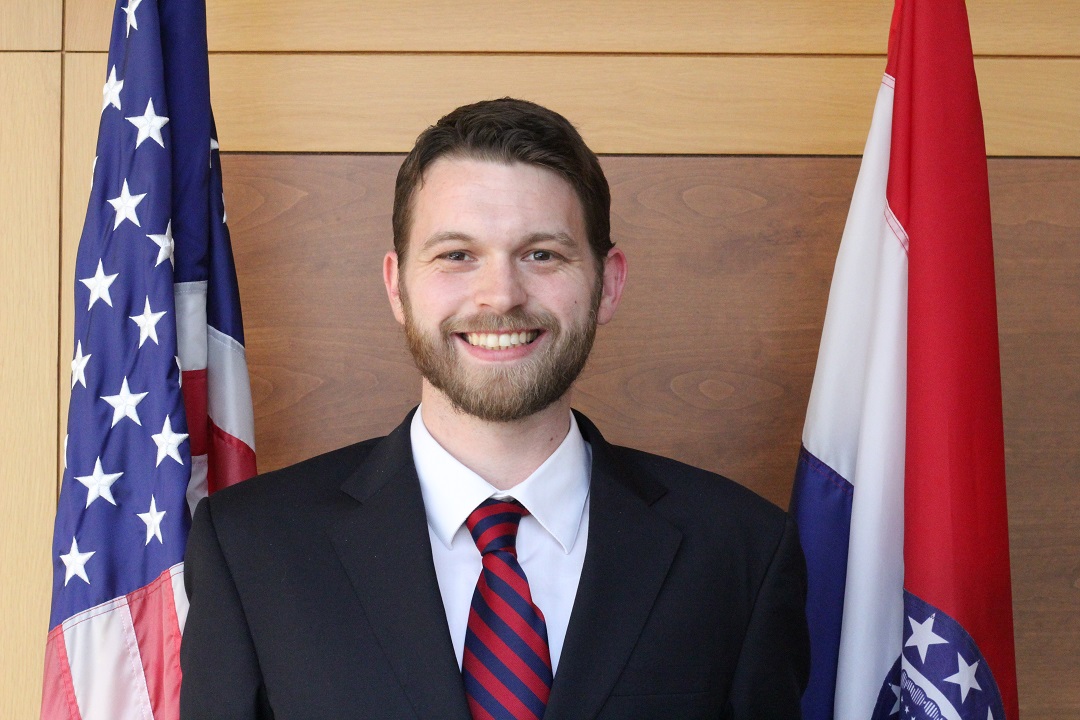 Cornell Auditorium in Plaster Hall
Cornell Auditorium in Plaster Hall
Admission: free
The region of Oceania has numerous opportunities for Missouri businesses. Both Australia and New Zealand’s governments have made opening their markets to the world a priority. As such, Australia and the US have a robust Free Trade Agreement that removes barriers for most products that cross the border. Come learn more about the opportunities and assistance available for anyone interested in trade between the US and Oceania region. This event is open to students, faculty, staff, and the public and is offered at no charge.
For those interested in registering for the event, the registration link is below:
http://events.r20.constantcontact.com/register/event?llr=tyoi8mcab&oeidk=a07eglr7yll6455511f
Jason Teeman is an International Trade Specialist for the State of Missouri’s International Trade and Investment Office. He received his B.A. in International Relations at San Francisco State University in California. Jason works on the Asia Team in Jefferson City supporting Missouri’s foreign trade offices in China, Japan and Korea. Since joining State Government, he has assisted with Ambassador Visits, Governor Trade Missions, Grant proposals, as well as coordinating local company visits to Asia. Recently, he received his Certified Global Business Professional (CGBP) credential from NASBITE.
5:30 p.m. Wednesday, Oct. 23, 2019 
Joplin Public Library
1901 E. 20th St.
Admission: free
The Whale Rider (1978) by Witi Ihimaera, the first Māori writer to publish both a novel and a book of short stories, is beloved by adults and younger readers alike, the world over. The New Zealand Book Council profile of Ihimaera describes The Whale Rider as “A magical, mythical work about a young girl whose relationship with a whale ensures the salvation of her village, [and] it is, says Ihimaera, the work of his ‘that the Māori community accepts best.’” Enjoy the book, learn about the Māori culture of New Zealand, and meet new people in the process by joining the Oceania-themed book club hosted by the Missouri Southern English honor society Sigma Tau Delta. Pick up a copy of The Whale Rider by Witi Ihimaera in Webster Hall 337 (while supplies last). The book club will meet on Wednesdays: Sept. 25 at Joplin Avenue Coffee (first third to half of book), Oct. 23 at the Joplin Public Library (second half of book), and Nov. 20 at Phelps Theater in the Billingsly Student Center on the MSSU campus (endings, adaptations, and afterlives). The book club is open to the public, and snacks will be provided.
9 a.m. Friday, Oct. 25, 2019 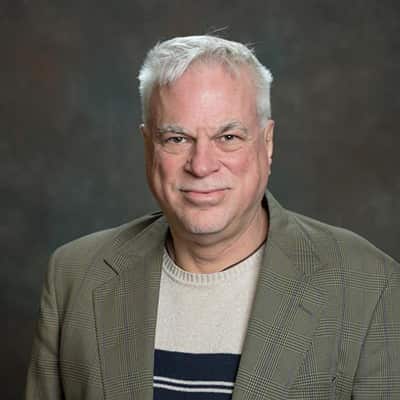
Corley Auditorium in Webster Hall
Admission: free
Pacific Islanders enjoyed two traditional drug substances: betel (Areca palm nut chewed with the leaves or catkins of the Piper betle vine and lime) and kava (Piper methysticum). Whereas betel likely originated in the Philippines, early settlers in Vanuatu domesticated kava around 2,500 years ago. From Vanuatu, kava spread west to a few regions of New Guinea, north to Pohnpei and Kosrae in Micronesia, and east to Fiji, Samoa, Tonga, and most of Polynesia. Like many substances, people traditionally drank kava for religious purposes – to gain access to the voices of their ancestors and other important spirits. But they also valued the drug’s typically calming and enjoyable effects on mind and body. Growing numbers of people beyond the Pacific are also developing new appreciations of kava. Currently, there are at least 100 kava bars in many American cities, and numbers are increasing fast. Will there be a kava bar near you, too, someday soon?
11 a.m. Friday, Oct. 25, 2019 
Corley Auditorium in Webster Hall
Admission: free
“Cargo cult” spread in the 1950s as a catchy term for an outburst of social movements of the Southwest Pacific. In these movements, Islanders turned to religious ritual to obtain “cargo” (or kago in Melanesian Pidgin English). The term is rich in meaning. It has signified manufactured goods or money, a new political order, local sovereignty and the withdrawal of colonial rulers, or even human salvation. Cargo cult prophets devised or revived ritual practices, creating new communities waiting for cargo’s arrival. Although anthropologists have largely abandoned the term, cargo cult thrives on the Internet, and in journalistic and literary circles, castigating or celebrating all sorts of untoward and wild desire. Cargo culting in Melanesia may have died away, but the term survives, transfigured, in many corners of popular culture.
1 p.m. Friday, Oct. 25, 2019 
Corley Auditorium in Webster Hall
Admission: free
Significant rural-urban migration has characterized the postcolonial Melanesian states including Vanuatu. Over the past 35 years, most people who once lived in Samaria village (Tanna Island) have moved to squatter settlements that ring Port Vila, Vanuatu's capital town. Families moved to town seeking employment, better education for children, and entertainment. In recent years, however, increasing numbers of international tourists are visiting Tanna. Most come to experience Iasur volcano’s spectacular regular eruptions. Many local families have become tourist entrepreneurs, building rough “bungalows” for tourists to rent. These new economic opportunities on the island encourage people to stay home, partly deflecting the pull of the city. Island families cultivate novel trans-island strategies, with interconnected members living both in town settlements and in home villages.
Lamont Lindstrom is Kendall Professor and Chair of Anthropology at the University of Tulsa. He has also taught courses in sociolinguistics and anthropology at Rhodes College in Memphis, the University of Papua New Guinea, and UC-Berkeley. He has long-term research interests in Vanuatu and other Melanesian countries and is the author of Cargo Cult: Strange Stories of Desire from Melanesia and Beyond (1993), Knowledge and Power in a South Pacific Society (1990), and Kwamera Dictionary (1987); co-author of Kwamera (1994), Kava: The Pacific Drug (1992), Island Encounters: Black and White Memories of the Pacific War (1990), and Across the World with the Johnsons: Visual Culture and American Empire in the Twentieth Century (2013); editor of Drugs in Western Pacific Societies: Relations of Substance (1987); and co-editor of Chiefs Today: Traditional Pacific Leadership and the Postcolonial State (1997), Culture, Kastom, Tradition: Developing Cultural Policy in Melanesia (1994), and The Pacific Theater: Island Representations of World War Two (1989). He has had visiting fellowships at the East-West Center (Honolulu), the University of Hawaii’s Center for Pacific Islands Studies, the MacMillan Brown Centre for Pacific Studies of Canterbury University (Christchurch, New Zealand), the Kagoshima University Research Center for the South Pacific (Japan), Tsinghua University (Taiwan), and Centre de Recherche et de Documentation sur l’Océanie (France). His most recent work is a cultural history of Vanuatu’s Tanna Island.
11 a.m. Tuesday, Oct. 29, 2019 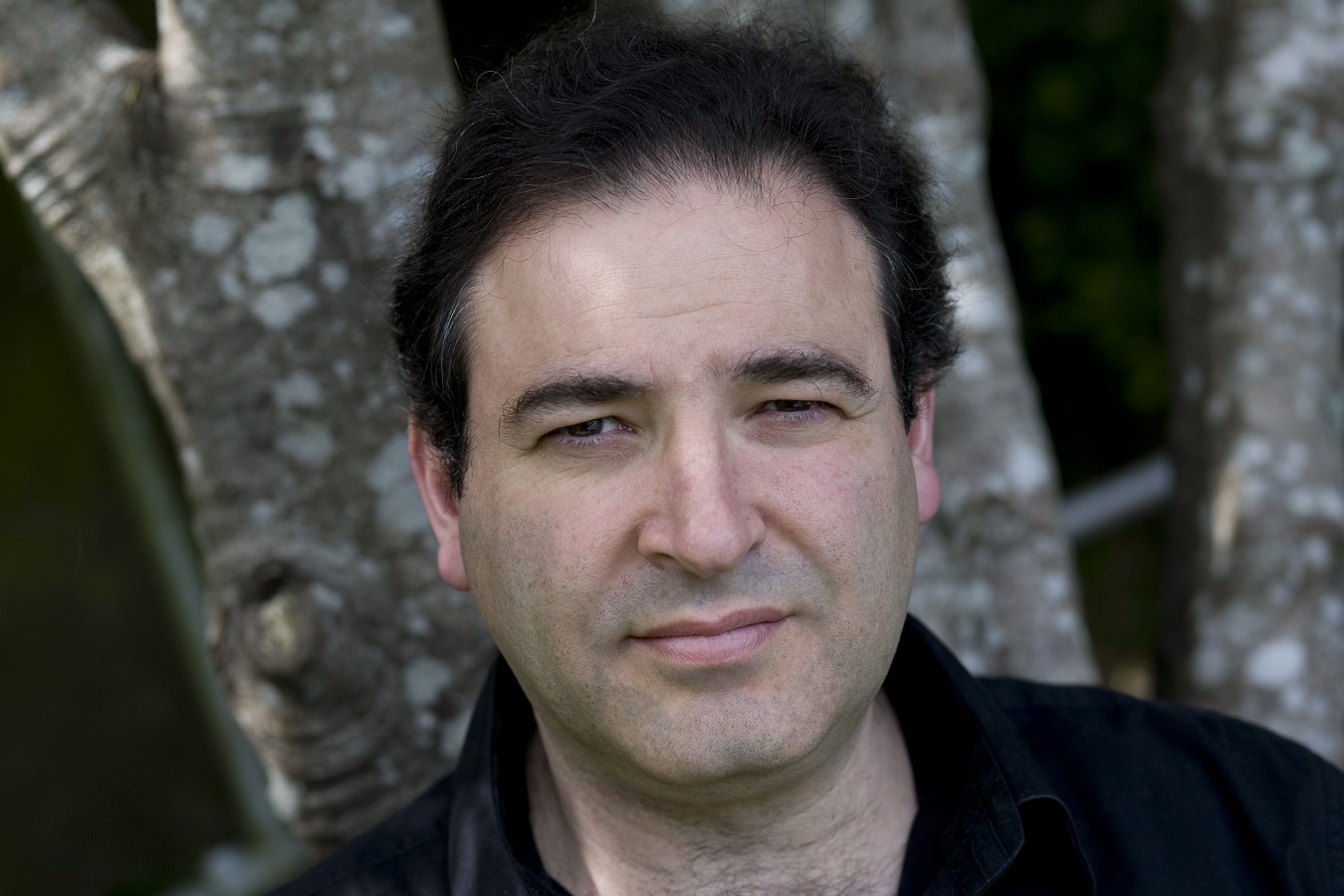 Corley Auditorium in Webster Hall
Corley Auditorium in Webster Hall
Admission: free
“But I had in front of me the dead man, the dead French soldier, and how I would have liked him to have raised his hand, I would have shaken his hand and we would have been the best of friends” – German soldier
Commissioned from acclaimed New Zealand composer John Psathas, The No Man’s Land Project premiered as a centerpiece of New Zealand’s First World War commemorations in 2016. The project is an 80-minute live cinematic concert, a deeply moving multi-media work that spans generations, continents, cultures and beliefs, and reflects on the devastating impact and futility of war. Psathas will talk about and share footage of his epic commemorative work.
One hundred fifty musicians, from 25 nations, descended from opposing forces of the Great War and filmed on significant battlefields around the world, are projected alongside a live, seven-piece international ensemble. The musicians, both live and virtual, perform as one global orchestra to create an exhilarating visual and musical experience
From the composer: “Why musicians travelling in the footsteps of soldiers 100 years ago? If we could go back in time and say to those on the battlefields “guess what happens here in 100 years” – would they believe us? If we said the same thing to those fighting now, would they believe us? Would we believe ourselves? We now wage war on our own species. But even at our worst, humanity and empathy continue to survive. Our No Man’s Land story culminates in acts of kindness: soldiers from opposing sides, ‘enemies’ offering each other water, a cigarette, a shoulder to lean on.”
Greek New Zealander John Psathas emerges from a dazzling 21st century backdrop, where dynamic collaboration with creative masters from all corners of the physical and artistic globe result in outcomes that are visionary, moving, and inspired. Psathas’ musical journey weaves through a myriad of genres, and has moved concert audiences in more than 50 countries on all seven continents (yes, even Antarctica).
Psathas has worked on a series of mega-projects (like scoring much of the opening ceremony of the Athens 2004 Olympic Games) that have led to an explosion of first-hand collaborations with artists from dozens of musical traditions spanning Asia, Europe, North and South America, Africa, and Australasia. His music has achieved a level of international success unprecedented in New Zealand history, and he is also now considered one of the three most important living composers of the Greek Diaspora.
6:30 p.m. Preconcert Talk 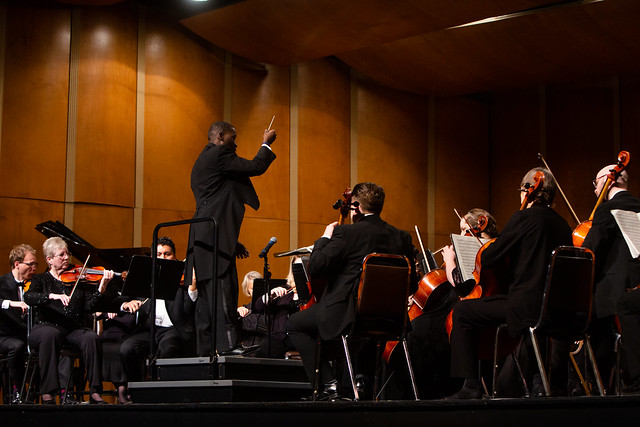 7:30 p.m. Wednesday, Oct. 30, 2019
7:30 p.m. Wednesday, Oct. 30, 2019
Ozark Chrisian College
Admission: free
The Southern Symphony Orchestra and the Missouri Southern Percussion Ensemble join together to showcase the orchestral and percussion ensemble works of composers from across Oceania. This concert will cap off the residency of Greek New Zealand composer John Psathas. The Southern Symphony Orchestra will also be featuring two performances by the MSSU Concerto Aria Competition winners, Abby Hazlett and Lydia Krikke.
9:30 a.m. Tuesday, Nov. 5, 2019 
Phelps Theater
Admission: free
Since the 1990s Australia has strengthened its economic relationship with the People’s Republic of China (PRC). In 2018, China was Australia’s largest individual two-way goods and services trading partner, accounting for 24.4% ($194.6 billion) of total trade. According to the Australian Department of Foreign Affairs and Trade, China was Australia’s largest export destination (valued at $123.3 billion) and import source (valued at $71.3 billion). However, even as Sino-Australian economic relations have grown deeper, tensions have begun to form as Australia is being pulled in different directions by its ally the United States and the rising global power of the PRC. The United States is committed to resisting China’s global ascendency and maintaining primacy in Asia. As a result, strategic competition between the U.S. and China has continued to escalate, with Australia often finding itself in position of either remaining closely aligned with the United States or strengthening relations with the PRC. China is also actively pursuing an agenda of global influence and Australia has been one of its favorite targets.
More recently, tensions between Australia and the PRC have continued to deteriorate, as Chinese businessmen linked to the Chinese Communist Party (CCP) have become some of the largest political donors in Australian politics, especially for the most recent 2019 elections. This talk will cover the recent history of Sino-Australian relations, specifically focusing on China’s impact on the Australian economy, global diplomatic relations, and domestic political environment.
Dr. Nicholas P. Nicoletti is an associate professor of political science at Missouri Southern State University. He received a Ph.D. in political science from the University at Buffalo, SUNY and a master’s of international studies and an M.B.A. from St. John Fisher College. His research interests focus on the relationship between domestic political processes and international relations. He is also the organizer of the international conference, The European Union and World Politics: The EU, Its Member States, and International Interactions, and the editor of a published volume of the same name. Nicoletti has published recent work on the democratic peace in International Theory and co-authored a book chapter in a volume on moral psychology for Springer Press.
7 p.m. Thursday, Nov. 7, 2019 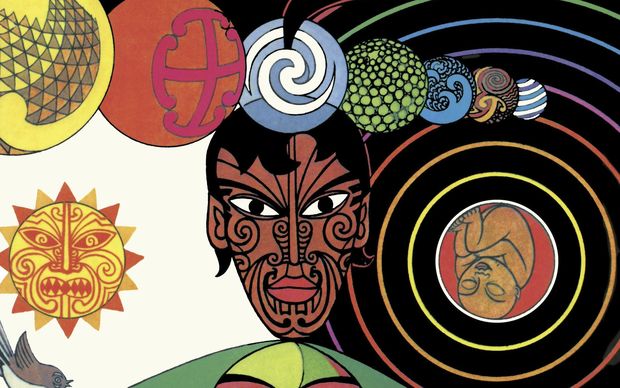 Cornell Auditorium in Plaster Hall
Cornell Auditorium in Plaster Hall
Admission: Free
In Samoan, the word tusitala means “writer of stories.” Let the tusitala of Oceania take you to the tropical islands and mysterious Outback of the Oceania region. Students from the Missouri Southern English Department and Sigma Tau Delta will provide information about selected authors and their works and read excerpts of poetry, mythology, and fiction representing the four distinct regions of Australia, Melanesia, Micronesia, and Polynesia. Introduced by Carley Petersen Durden, the evening will offer insight into the lives of the people of Oceania through the power of storytelling. All readings are in English translation. (The illustration is a detail from the cover of New Zealand writer and illustrator Peter Gossage’s How Maui Defied the Goddess of Death [Penguin NZ, 1985].)
10:30 a.m. – 1:30 p.m. Wednesday, Nov. 13, 2019 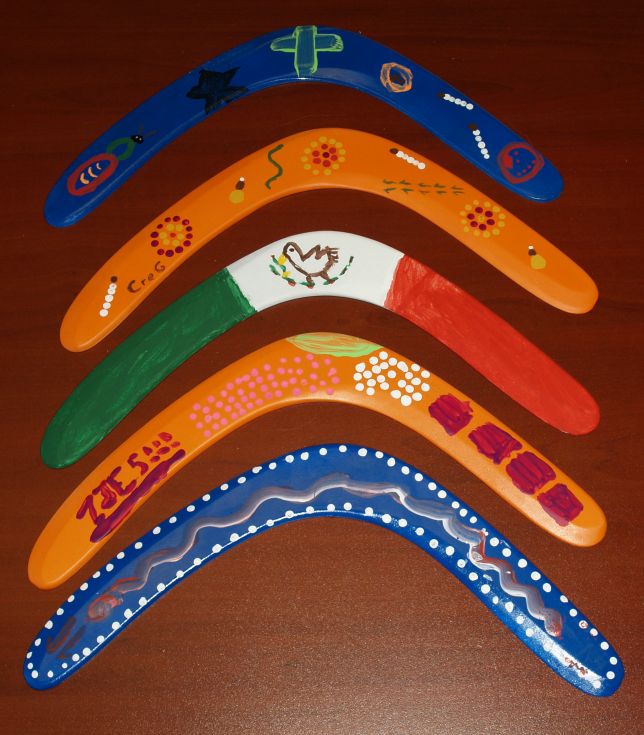
Billingsly Student Center
Admission: free (while supplies last)
What is more Australian than a boomerang? The Campus Activities Board is providing the boomerangs and the paint; you just have to supply the creativity.
2:30 p.m. and 7 p.m. Wednesday, Nov. 13, 2019 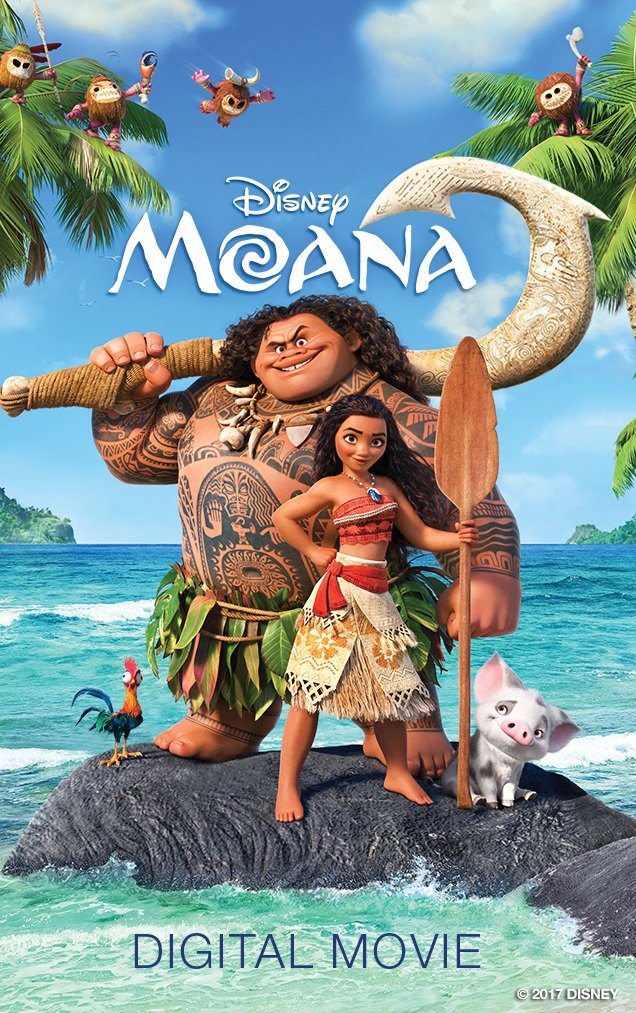
Phelps Theater
Admission: free
(director Ron Clements and John Musker, 2016; 107 minutes)
An adventurous teenager sails out on a daring mission to save her people. During her journey, Moana meets the once-mighty demigod Maui, who guides her in her quest to become a master way-finder. Together they sail across the open ocean on an action-packed voyage, encountering enormous monsters and impossible odds. Along the way, Moana fulfills the ancient quest of her ancestors and discovers the one thing she always sought: her own identity. Free candy and drinks provided.
9:30 a.m. Thursday, Nov. 14, 2019 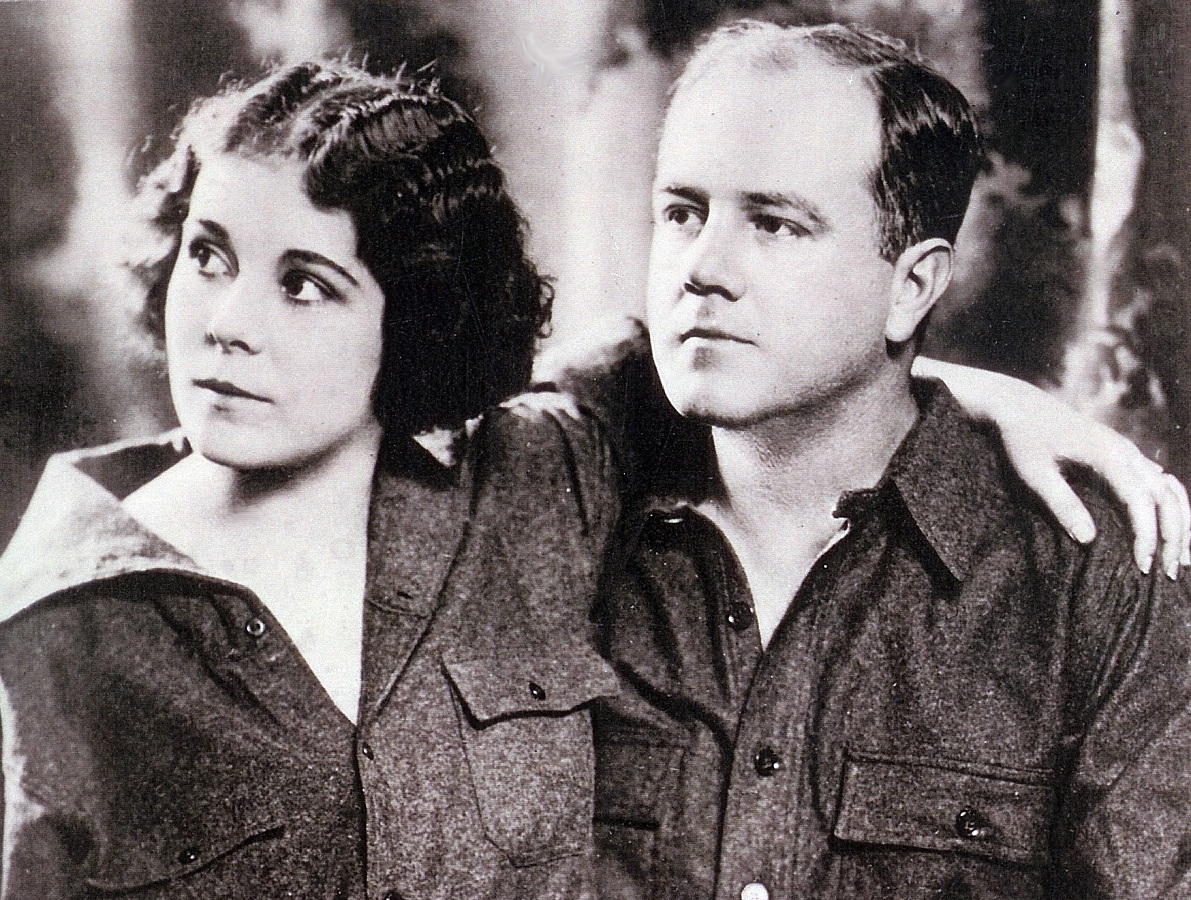 Corley Auditorium in Webster Hall
Corley Auditorium in Webster Hall
Admission: free
In a time when most Americans never ventured beyond their own shores, two Kansans, Martin and Osa Johnson, brought home the sights and sounds of faraway places. In their films and books, they introduced audiences to exotic peoples and presented close-up encounters with epic creatures. The silent images the Johnsons shined on silver screens across the world electrified audiences. Each new expedition contained heightened thrills and crossed yet another frontier of exploration and cinematography. In 1917, they were among the first to create a visual record of life and custom in Oceania, primarily in the Solomon Islands and Vanuatu. Their photographs capture the faces of island ancestors and documented island culture that shaped people’s lives 100 years ago. This presentation will include Johnsonian photographs and film footage prepared for South Seas centennial commemorations around the globe.
Martin and Osa Johnson spent their lives seeking and exploring the unusual and the unknown. They both grew up in Kansas, with Martin Johnson calling Lincoln and Independence home. Osa Leighty was born in Chanute and before she met Martin, she had never been more than 30 miles from home. Before he married Osa, Martin had traveled around the world and worked for the famous American writer Jack London. When his travels with London were over, he returned, met and married Osa, and together, with courage, cameras, and a small amount of money earned by working vaudeville, Martin and Osa left the U.S. to seek out the remote and uncharted regions of the world. After their Oceanic expeditions, Martin and Osa continued traveling the world, resulting in two expeditions to North Borneo and five to regions of Africa. Martin Johnson was killed in a commercial airplane crash in California in 1937; Osa was injured, but survived to live another 16 years before dying of heart disease. The Johnsons could not have children, so at Osa’s death, all their lifeworks, including more than 40 miles of film and thousands of photographs, promotional materials, personal correspondence, and field journals were inherited by Osa’s mother, Belle Leighty. Mrs. Leighty opened the Martin and Osa Johnson Safari Museum in Chanute, Kansas on June 11, 1961. The museum features award-winning exhibits of the Johnsons’ lives and adventures, ethnic cultures, and changing themes of special exhibits.
Jacquelyn Borgeson Zimmer is curator of the Martin and Osa Johnson Safari 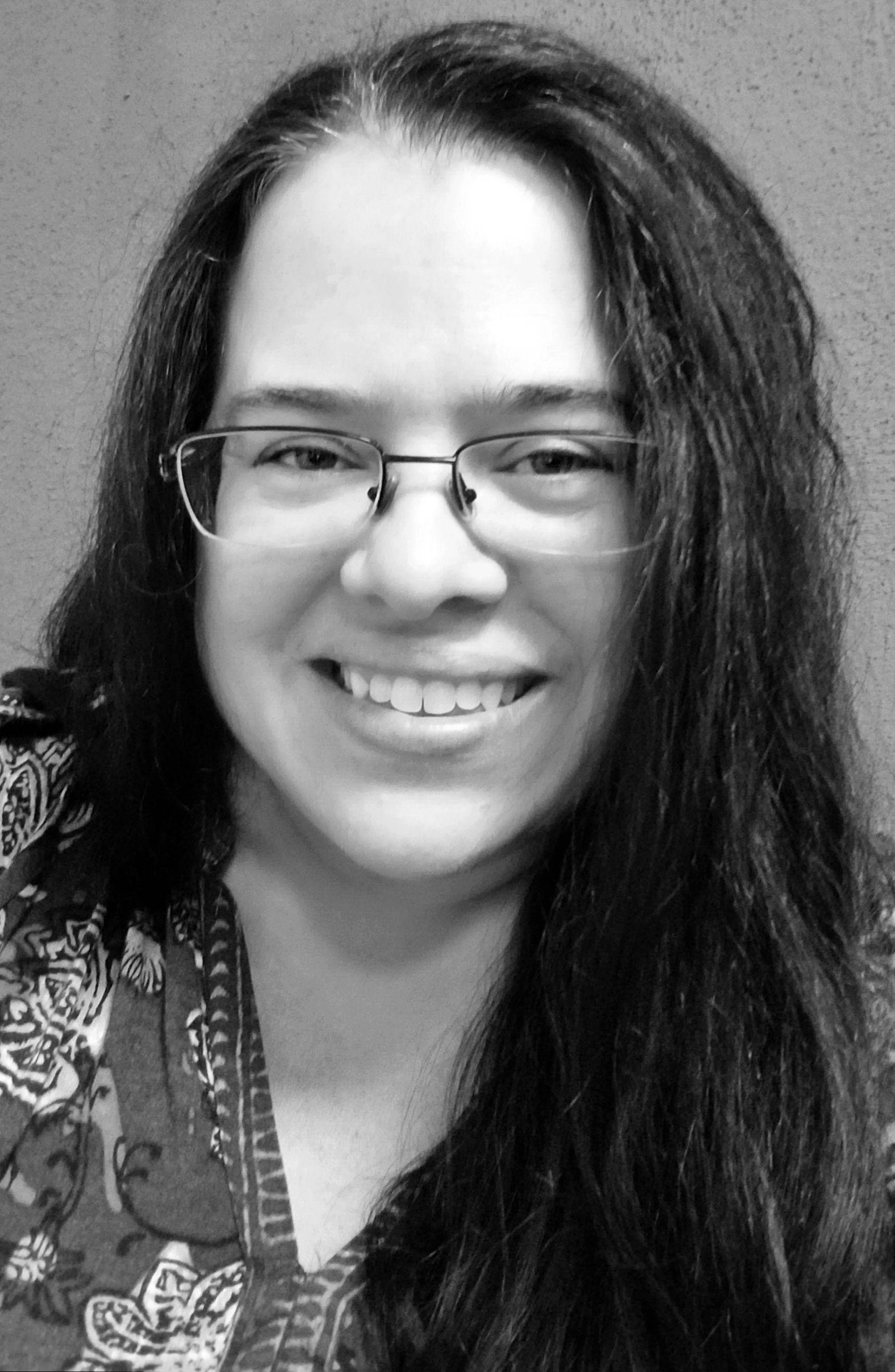 Museum in Chanute, Kansas. Hired in 1995 just after graduating with an M.A. in museum studies from Wright State University in Dayton, Ohio, she develops collection conservation programs and curates the museum’s onsite and traveling exhibitions. She is also the liaison with the museum’s three sister museums in Africa and Malaysia. She has presented lecture programs and done collection field study across the U.S., at the museum’s sister sites, as well as in Chile, Ireland, the Czech Republic, and most recently Vanuatu. For the 100th anniversary of the Johnsons’ expeditions to Oceania, Borgeson Zimmer worked with the Vanuatu Heritage Center to develop and open a photograph exhibition at Port Villa.
Museum in Chanute, Kansas. Hired in 1995 just after graduating with an M.A. in museum studies from Wright State University in Dayton, Ohio, she develops collection conservation programs and curates the museum’s onsite and traveling exhibitions. She is also the liaison with the museum’s three sister museums in Africa and Malaysia. She has presented lecture programs and done collection field study across the U.S., at the museum’s sister sites, as well as in Chile, Ireland, the Czech Republic, and most recently Vanuatu. For the 100th anniversary of the Johnsons’ expeditions to Oceania, Borgeson Zimmer worked with the Vanuatu Heritage Center to develop and open a photograph exhibition at Port Villa.
5:30 p.m. Wednesday, Nov. 20, 2019 
Phelps Theater
Admission: free
The Whale Rider (1978) by Witi Ihimaera, the first Māori writer to publish both a novel and a book of short stories, is beloved by adults and younger readers alike, the world over. The New Zealand Book Council profile of Ihimaera describes The Whale Rider as “A magical, mythical work about a young girl whose relationship with a whale ensures the salvation of her village, [and] it is, says Ihimaera, the work of his ‘that the Māori community accepts best.’” Enjoy the book, learn about the Māori culture of New Zealand, and meet new people in the process by joining the Oceania-themed book club hosted by the Missouri Southern English honor society Sigma Tau Delta. Pick up a copy of The Whale Rider by Witi Ihimaera in Webster Hall 337 (while supplies last). The book club will meet on Wednesdays: Sept. 25 at Joplin Avenue Coffee (first third to half of book), Oct. 23 at the Joplin Public Library (second half of book), and Nov. 20 at Phelps Theater in the Billingsly Student Center on the MSSU campus (endings, adaptations, and afterlives). The book club is open to the public, and snacks will be provided.
7:30 p.m. Friday, November 22, 2019 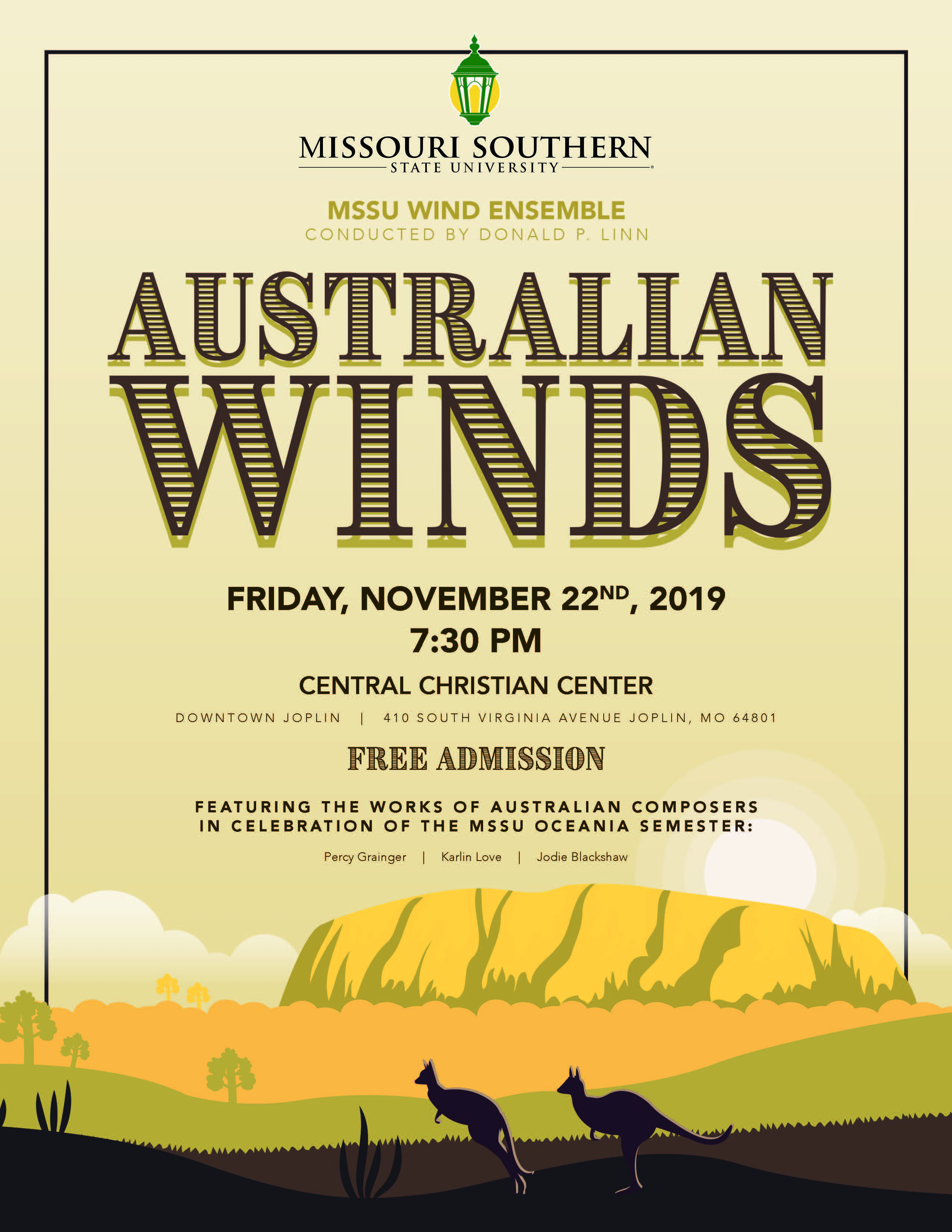
Central Chrisitan Center
Admission: free
Come and hear the MSSU Wind Ensemble, conducted by Donald P. Linn, as they perform works by Australian composers in celebration of the MSSU Oceania Semester. The ensemble will perform works from Percy Granger, Karlin Love, and Jodie Blackshaw. The event will be at Central Christian Center, 410 South Virginia Avenue, in downtown Joplin. Admission is free.
Dr. Chad Stebbins
Director, Institute of International Studies